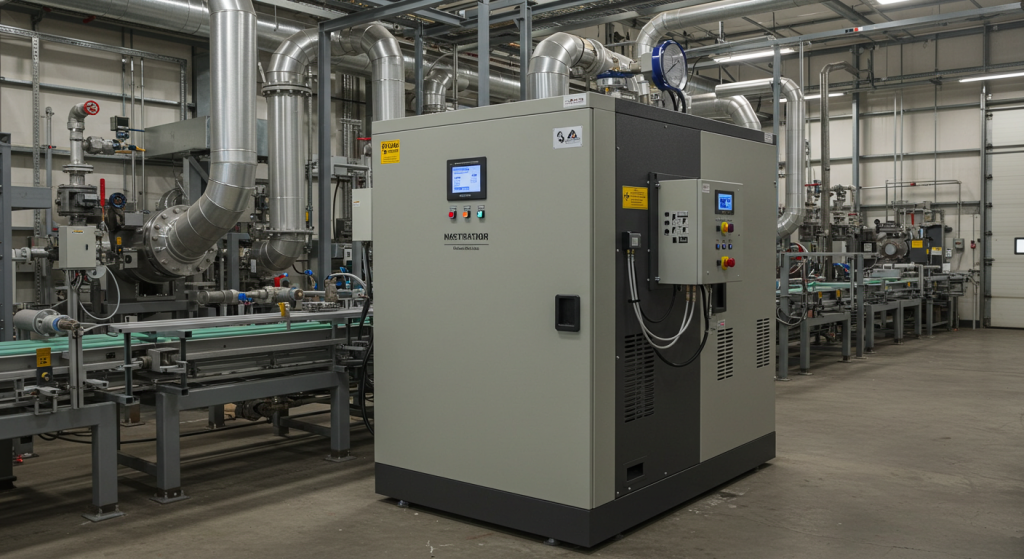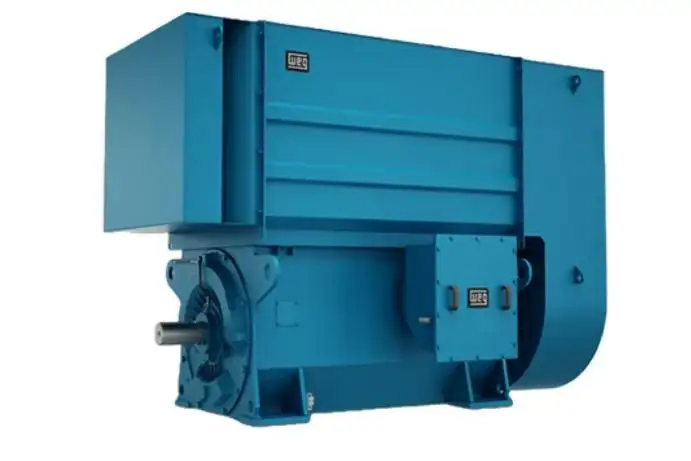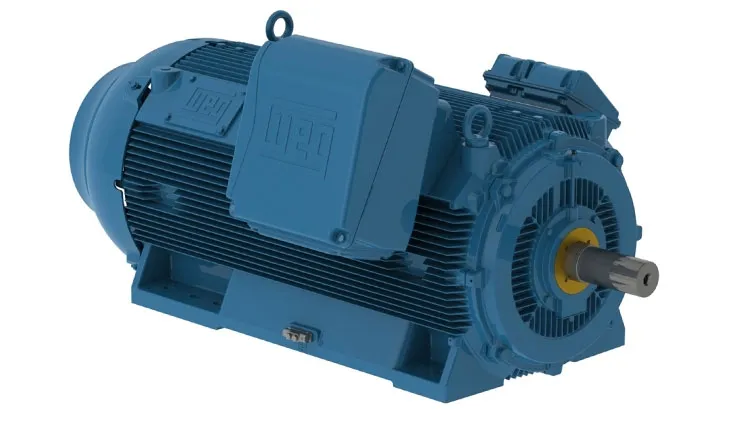The Introduction of a Nitrogen Generator
In the industrial sector, a consistent and dependable supply of nitrogen gas is very important. But what if you could generate nitrogen at the exact location it is required and at the time you need it? A nitrogen generator makes this possible.
A nitrogen generator is a device that extracts nitrogen from the air and delivers it in a pure usable form. Instead of waiting for cylinders or liquid deliveries, industries now prefer on-site nitrogen production due to receiving cost savings, convenience, and uninterrupted operations.
How Does a Nitrogen Generator Work?
Let’s break it down. Air consists of about 78% nitrogen, 21% oxygen, and other trace gases. What is a nitrogen generator? A separates nitrogen from this mixture through air separation technology. There are two main technologies used:
1. PSA (Pressure Swing Adsorption): Utilizes a material called Carbon Molecular Sieve (CMS). When oxygen, CO2, and moisture are adsorbed during passing through CMS with compressed air, nitrogen is free to flow. This method provides high nitrogen purity levels up to 99.999%.
2. Membrane Technology: Uses specialized membranes that are permeable to nitrogen, which allow oxygen and other gases to be filtered out. It's typically used where lower purity (95%-99%) is acceptable.
For extensive operations, a cryogenic nitrogen generator can be utilized. This process has air cooled to liquefy first, and nitrogen is then distilled from it. While it can capture extremely large volumes, this process is complex and costly.
Types of Nitrogen Generators
Various models are available for specific requirements. A twenty-four-hour service nitrogen generator is one of the most common ones:
• PSA Nitrogen Generator: Ideal for high-purity industrial use.
• Membrane Nitrogen Generator: Compact and lower cost; great for labs and food packaging.
• Cryogenic Nitrogen Generator: Suited for extremely large-scale production.
• Liquid Nitrogen Generator: Produces liquid nitrogen for cryogenic applications.
• Portable Nitrogen Generator: Used for mobile applications like tire inflation.
• Small Nitrogen Generator: Perfect for small-scale labs or workshops.
Applications of Nitrogen Generators
What is a Nitrogen generator? These generators are utilized in a variety of fields:
- Food Packaging (MAP): Displacing oxygen in food reduces spoilage.
- Laser Cutting: Delivers a clean, oxidation-free environment for cutting steel.
- Pharmaceuticals: Supports inert atmospheres that protect sensitive drugs.
- Chemical Blanketing: Covers flammable chemicals to prevent burning and oxidation.
- Electronics Manufacturing: Works with components to avoid contamination during soldering.
- Tire Inflation: Benefits tire life and performance.
- Oil and Gas: Applied in enhanced oil recovery and pipeline purging.
- Fire Suppression: Reduces oxygen so the fire cannot be sustained.
- Heat Treatment: During the hardening process of metals, inert atmospheres are created.
- Aquaculture: Maintains water quality and elevates oxygen levels.
Benefits of Using a Nitrogen Generator
1. Savings
Generators save money as there are no cylinder refills or liquid nitrogen delivery costs. There are no rental fees, transport charges, or hidden costs—only a fixed, low-cost nitrogen supply.
2. Generation When Needed
An on-site nitrogen generator produces nitrogen on the spot as and when needed. No waiting and no interruptions. Uninterrupted access to N₂.
3. Nitrogen Purity
You control nitrogen purity levels with modern production systems. Whether it is food packaging, laser cutting, or any other application, exact specifications can be provided gravimetrically, ranging from 95% to 99.999%.

4. Safety
Replace bulky, high-pressure nitrogen cylinders with generators. It's a safer option that lowers the possibility of leaks, explosions, and related injuries.
5. Environment
Reduced deliveries mean fewer emissions. It’s a more sustainable and greener on-site nitrogen source.
6. Maintenance
Self-diagnostic features, along with fewer moving parts built into the generator, make for less maintenance work and increased operational efficiency.
7. Business Growth
These systems grow with your business. Expanding nitrogen needs can easily be met by simply adding extra modules.
8. Reliable Supply
You can stop worrying about empty tanks and delayed shipments. A nitrogen generator guarantees a constant and continuous nitrogen gas supply.
Technical Features You Should Know
• Purity of Nitrogen: Depending on the application, it falls between 95% and 99.999%.
• Flow Rate: Determines how much nitrogen is produced per hour or minute.
• Air Compressor Integration: Essential for the air-to-nitrogen conversion.
• Carbon Molecular Sieve (CMS): These PSA generators’ main components.
• Filtration Systems: Cleans air of dust, oil, and moisture.
• Control Panels: Precisely monitoring and tuning is possible.
• Storage Tanks: Maintains a reserve of nitrogen for peak demand periods.
• Maintenance Requirements: Generally low, mainly routine CMS and filter inspections.
Why Go for On-Site Nitrogen Generation?
• Eliminate Nitrogen Deliveries: Cut down on logistics expenses.
• Reduce Cylinder Handling: Improve safety in the workplace.
• Reduce Operating Costs: Often less than an 18-month payback period.
• Reduces Downtime: Consistent availability of Nitrogen enhances productivity.
Purchasing the Right Nitrogen Generator
Every business—from food packaging to laser cutting—has distinct requirements. For purchasing the right nitrogen generator, the following considerations are critical.
1. What Purity Level is Required?
Pharmaceuticals and electronics might need 99.999% purity, whereas fire suppression requires less stringent standards. Make sure you know your specifications.
2. What is the Flow Rate Requirement?
Flow rate affects the generator size and technology used. Ensure accurate measurements for daily and peak nitrogen demand to avoid undersizing.
3. PSA or Membrane Technology?
For demanding applications, PSA nitrogen generators offer higher purity. For moderate needs, membrane nitrogen generators are compact and versatile.
4. Do You Already Have an Air Compressor Set Up?
A clean, dry compressed air source is critical for nitrogen generators. If there is no existing setup, consider budgeting for an air compressor.
5. Space Requirements
Make sure your facility is able to accommodate the installation and maintenance space requirements for industrial nitrogen generators, as these can vary greatly in footprint.
6. Is Portability Required?
A portable nitrogen generator could be ideal for flexible operations or fieldwork.
The Changing Landscape of Nitrogen Generation
Systems are integrating new technologies like the Internet of Things (IoT) and AI, making sustainable nitrogen production smarter, more energy-efficient, and compact. On-site gas generation is now more efficient than ever thanks to IoT monitoring and AI predictive maintenance.
With the IoT and AI Predictive Maintenance capabilities, onsite gas generation systems are ready for the future.
Conclusion:
Embracing the Advantages of What is a nitrogen generator? It is a Self-Sufficient Nitrogen Supplier. A nitrogen generator allows you to have more autonomy, greater efficiency, and increased savings. For those in food packaging, electronics, or heavy industry, systems are available tailored to each specific need. As the world's leading integrator of compressed air solutions, VIBRANT is dedicated to creating the most economical and energy-efficient air compressors.









